7 Must-See Masterpiece Objects, Artworks, and Jewels at TEFAF New York’s Latest Online Fair
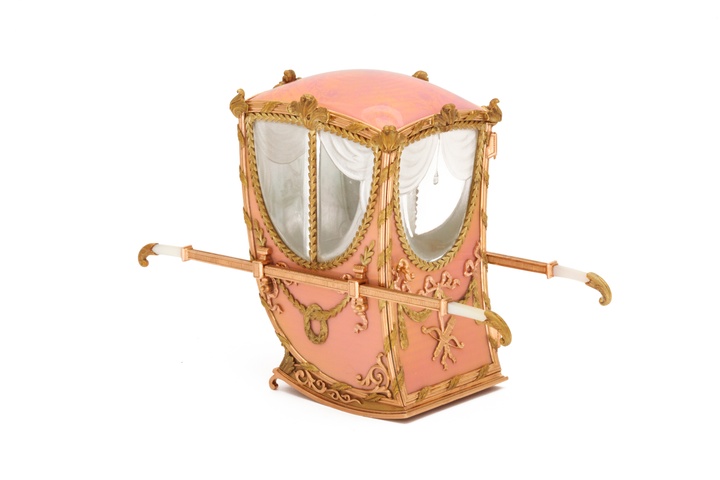

Artnet Gallery Network

“Masterpiece” is a word that gets tossed around rather casually in the art world, but TEFAF goes to the dictionary definition.
Three hundred dealers are offering just one treasure—be it an artwork, design object, or exquisite jewel—at this year’s TEFAF Online New York, which opens to the public this weekend (November 1–4).
The fair has gone to some lengths to maintain its rigorous vetting standards and ensure that the works are of the highest possible quality.
Take a glimpse at 7 works we can’t stop thinking about.
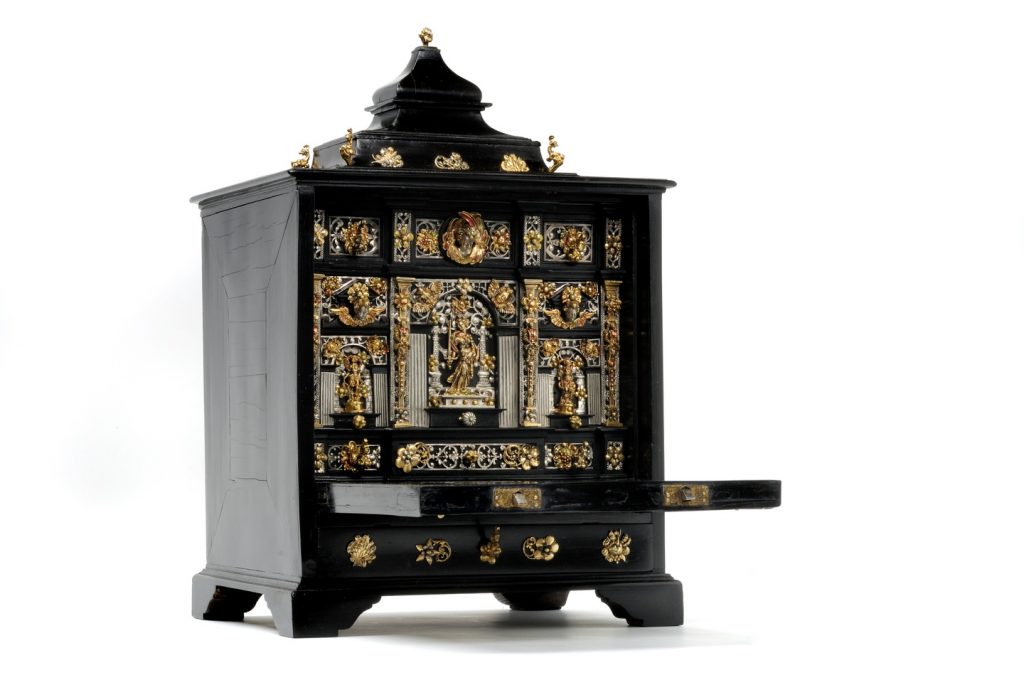
Boas Ulrich, Court Cabinet of the Dukes of Newcastle (circa 1594). Courtesy of Kunstkammer Georg Laue.
This intricately constructed court cabinet is one of but a few known works by Augsburg goldsmith Boas Ulrich (1576–1623), the era’s most celebrated maker of cabinets of curiosities. Made to be viewed from all sides, this cabinet is a nearly incomparable jewel of cabinetmaking and goldsmithing, with elegant ebony veneer contrasting with silver plaquettes, some of which are gilt. Both mythological and religious scenes are rendered with incredible delicacy. The cabinet’s central silver relief presents Venus and Cupid at Vulcan’s forge, a popular court subject that hints that this cabinet was probably intended as a wedding present.
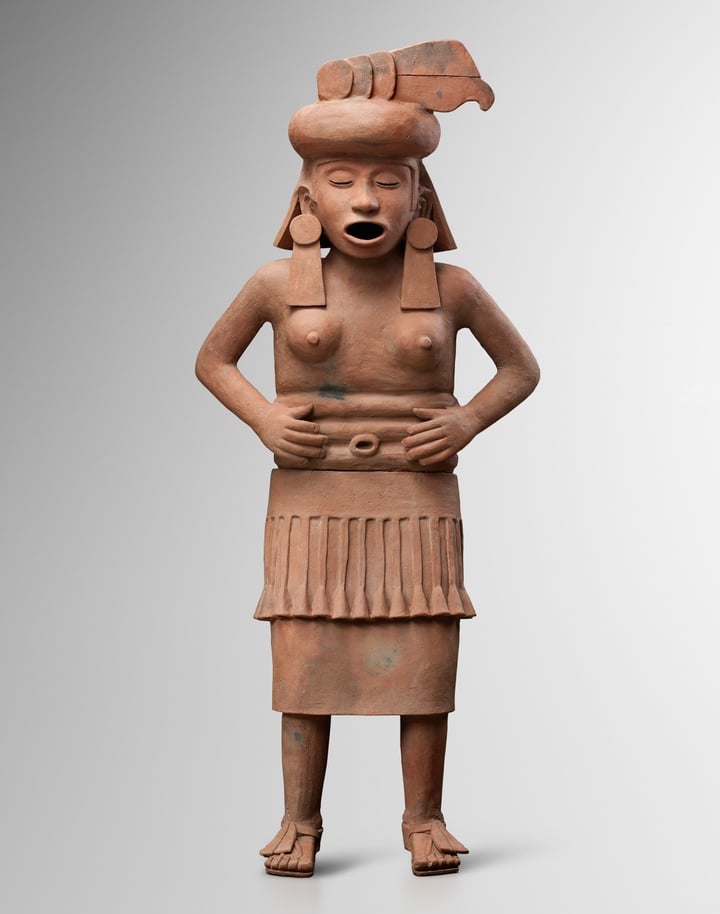
Cihuateotl (Celestial princess) (600–900 AD). Courtesy of Galerie Mermoz.
This monumental Totonac statue is a Cihuateotl or “Celestial Princess,” a traditional statue believed to have embodied the soul of a woman who died during childbirth. This particular sculpture is characteristic of the site of El Zapotal, one of the major centers of the Totonac civilization of Pre-Columbian Mexico. Lifesize, the work is an absolute master class in clay sculpting and firing. A nearly identical statue can be found on display at the Israel Museum. The figure’s not-quite erect stature suggests that it was installed against a pyramid. Shown with her chest bare and her hands on her belly, the figure’s open mouth suggests that she is singing or reciting psalms, while her closed eyes evoke eternal rest. The three folds modeled on the belly are the marks of pregnancy and birth.
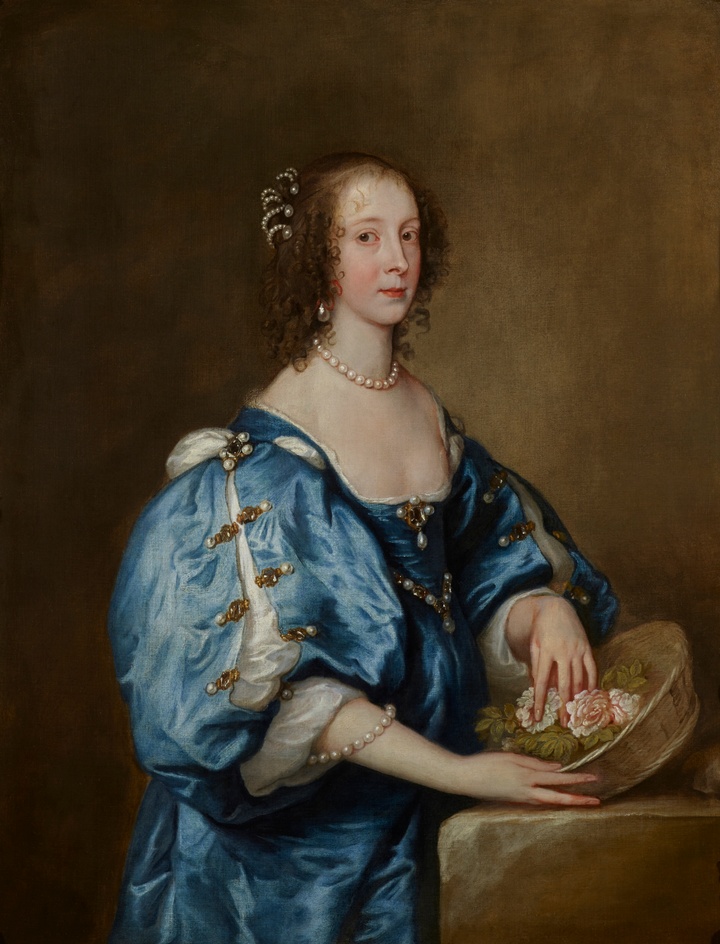
Van Dyck, Mary Newton, later Lady Jermyn (circa 1637). Courtesy of the Weiss Gallery.
This luxurious portrait of a lady was painted at the height of Van Dyck’s career in England and is contemporaneous with some of the artist’s most highly regarded female portraits. The sitter is presented in a sumptuous bejeweled blue silk dress with a basket of roses (symbolic of beauty, youthful bloom, love, and even fertility) and pearls and diamonds (a nod to purity and Venus). But by 1765, the subject’s identity had been forgotten and was mistakenly thought to be the Duchess of Buckingham. She is now believed to be Mary Barber, the Viscount Brouncker’s relative by marriage, wife of Thomas Newton of Heightly Hall, who, when widowed, married the courtier Sir Thomas Jermyn. Portraits of Barber possesses a strong resemblance to our sitter here. If that is indeed the case, it is possible that Van Dyck painted this portrait to celebrate Mary’s pregnancy before the birth of her daughter, Princess Elizabeth, in December 1635.
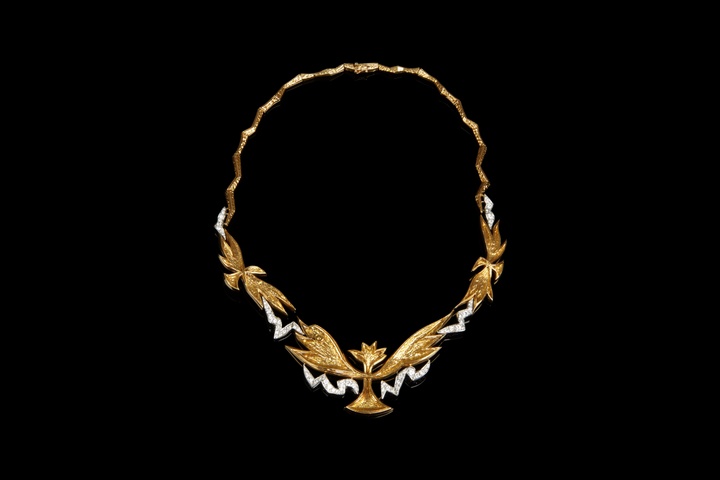
Georges Braque, Poseidon (1962–1963). Courtesy of Didier Ltd.
Artist-designed jewelry has its own special charm and this unique necklace was designed by Cubist pioneer Georges Braque and made by Heger de Löwenfeld. Here, brilliant-cut diamonds are set into 18-carat yellow gold and platinum. Alluding to the title, Poseidon is a central motif of a winged fish with two platinum diamond-laden angular waves (or lightning bolts) flanking. Two winged birds appear on either side. Braque came to jewelry-making late in life, taking up the practice in 1961 at the age of 79. With his health waning, jewelry allowed him to continue his practice, and he devoted the last two years of his life to creating unique jewels, establishing himself quickly at the forefront of the “Wearable Art” movement in France.

Yoginis meditating under the moonlight (circa 1700). Courtesy of Galerie Kevorkian.
This delicately rendered scene presents a group of mystic women wearing loose pink robes and Shaiva ash marks. Four yoginis are seated, meditating on mats, and a tiger skin under a night sky faintly lit by a crescent moon. Each figure possesses individualized gestures: one plays with her rosary beads, another is smoking a hookah. A fifth yogini stands, leaning on a swing. The pleasurably idiosyncratic image is a testament to the elegant Muslim courts of Deccan India, which, influenced by Sufi mysticism, became a welcoming home to mystics from as far as the Middle East and North Africa. There, disparate cultural influences from India, Iran, West Asia, and even Europe melded, and innovative iconographies emerged, including, as seen here, an interest in female ascetics, specifically yoginis, a fascination of both patrons and artists alike.
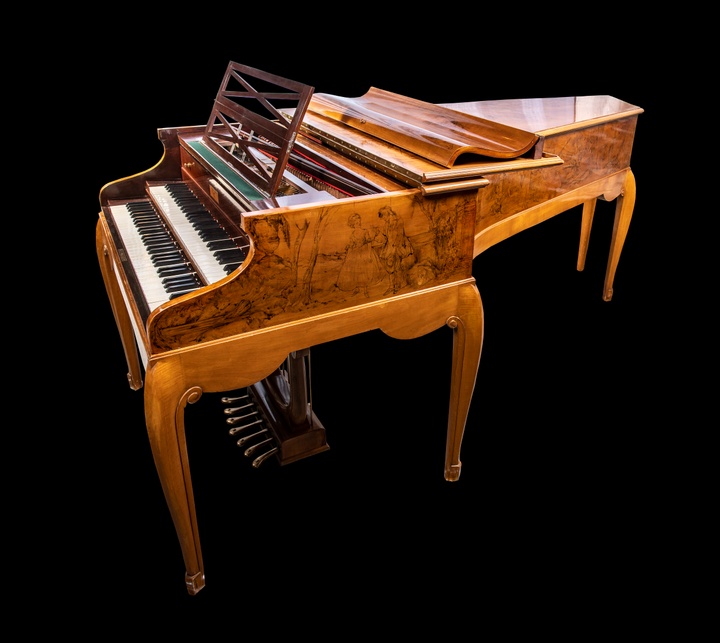
Harpsichord (1925). Courtesy of Jean Michel Renard.
Even before this harpsichord debuted in Paris at the Salon des Arts Décoratifs in 1925, it caused an uproar. Some critics decried it as too “classical” an instrument to be exhibited at the Salon, while others regarded its form and decoration excessively modern. The harpsichord received a brief revival in popularity around the turn of the century and this modern harpsichord was conceived of by Gustave Lyon, head of the famed Pleyel piano company, under the artistic direction of influential Polish harpsichordist and pianist Wanda Landowska. The design of the furniture was then entrusted to the architect-decorators Louis Süe and André Mare, while the ornamentation was the work of the painter Bernard Naudin, making this the only Art Deco-designed harpsichord in existence.
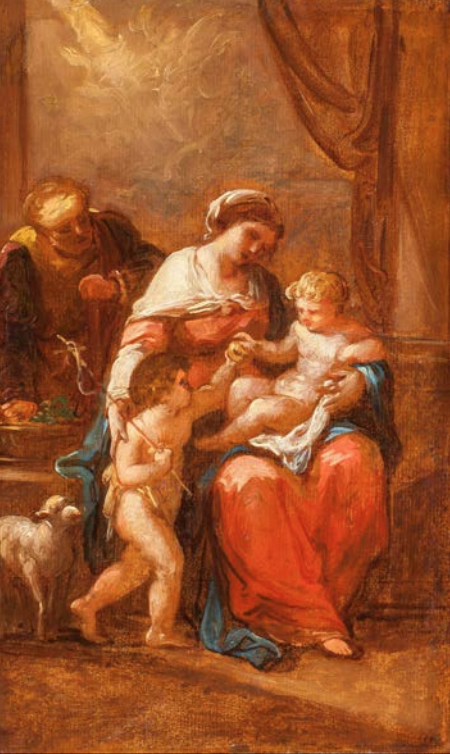
Angelica Kauffman, The Holy Family with the Infant John the Baptist (1789). Courtesy of Rafael Valls Limited, London.
One of the two founding women members of London’s Royal Academy, the Swiss-born Angelica Kauffman was a successful Neoclassical painter famed for her ability to imbue her subjects with a relaxed sense of familiarity. With a successful career in England and Rome (and a rather sensational life story of her own), Kauffman painted mostly history scenes, making this work a rare example of her approach to religious subject matter.
TEFAF Online New York is open to the public virtually November 1–4, 2020.